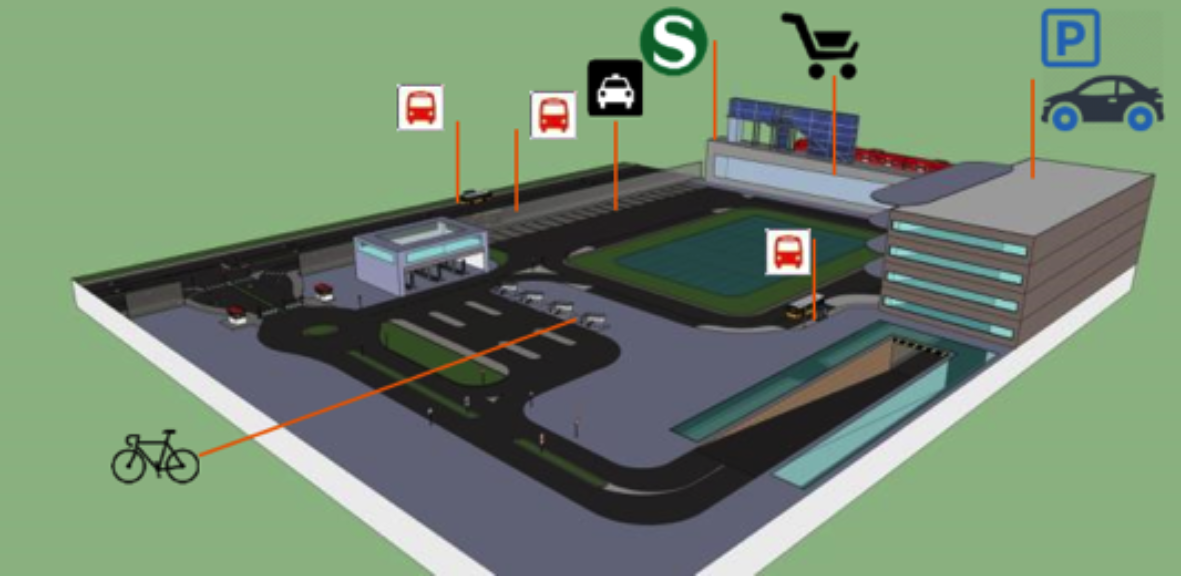
Intermodal urban mobility systems

Intermodal mobility systems
An intermodal mobility hub optimizes and builds upon the spatial networking of various mobility solutions and services in a central location, including components such as bike sharing, car sharing, public transport, intuitive booking and guidance systems, intelligent charging infrastructure, smart parking and new space utilization concepts , e.g. co-working spaces.
The research project targets city administrations (Integrated City Development Unit), as well as companies active in the area of transport, energy, real estate and IT.
Mobility revolution as part of the energy revolution
After the German “Energy Transition” has initiated fundamental transformation in urban energy systems, "Mobility Transition" is imminent. While the demand for mobility is increasing worldwide—as an important indicator of improving quality of life—it is also applying significant pressures to human and natural systems. It contributes to congestion, climate change, local air pollution, noise pollution, death and injury, occupation of urban space and the sealing of natural surfaces. The current dependence on motorized private transport made planners and researchers fundamentally rethink urban transport. The German Federal Government has set targets of reducing transport demand, emissions and fuel consumption. By 2050, energy consumption share that belongs to transport is expected to fall by 40 percent compared to 2005, with the number of electric vehicles increasing from 30,000 to six million by 2030 (source: Transport, Federal Government, 2015). The EU Commission has set the objective of phasing out fossil-fuelled vehicles in cities by 2050. (See “EU White Paper on Transport”, 2011). Oslo is the first European city to remove by 2020 personal motorized vehicles from the city center completely. At the municipal level, the urban mobility transition calls for a holistic approach including new models of urban development, combining compact urban development with mixed-use spaces, decentralized concentration, public-transport oriented urban development, inclusion and traffic safety (Source: What Cities want, TU München und MAN, 2013).

Modular offer:
An "intermodal mobility hub" consists of a modular system of networked and coordinated mobility solutions and services. Existing mobility nodes such as train stations or mobility transfer areas are ideally suited locations for intermodal mobility hubs. Possible solutions are electric car-sharing, bike and pedelec sharing, charging infrastructure, guidance system, routing app, integrated booking and billing systems, flexible space utilization concepts and district logistics hub.

Reference projects
The aim of the research project Shared E-Fleet was to design and implement an integrated, cloud-based ICT solution for the intelligent operation of shared electric vehicle fleets between companies. The developed solutions are tested in several model tests at different locations under real conditions.
The project targets primarily small and medium-sized enterprises (SMEs) sharing an electric vehicles fleet (e.g. in technology parks, commercial areas, etc.), as well as large companies and public administrations who share electric vehicle fleets with associated companies or organizations. This approach allows a critical mass in terms of workload of electric vehicles to be reached.